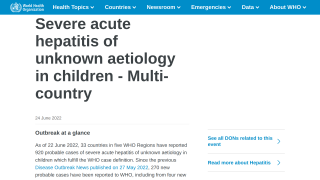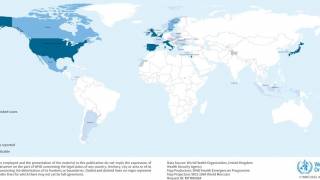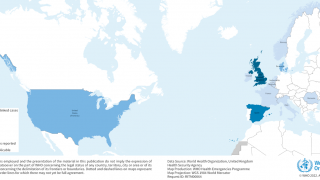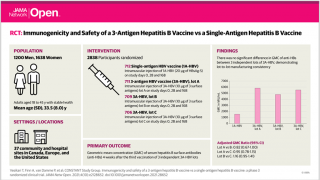Cincinnati Quietly Became America’s Leading Hepatitis A Outbreak

According to a new report from the Ohio Department of Health (ODH), the Hepatitis A virus outbreak across Ohio has reached 2,997 cases, as of June 3, 2019.
This data represents an increase of 1,466 Hepatitis A virus (HAV) cases in just 4 months.
Specifically, 4 of Ohio’s 88 counties reported 34 percent of these HAV cases.
These counties are located in the greater Cincinnati area; Butler (408), Mongomery (283), Hamilton (235), and Claremont (110); have reported 1,036 HAV cases.
And, across the Ohio River in northern Kentucky, the Health Department reported 299 HAV cases by mid-April.
This segmented data would rank the Greater Cincinnati area #6 in the total number of HAV cases reported since the nationwide outbreak began in 2016.
The leading states reporting HAV cases are Kentucky (4,664), West Virginia (2,515), Tennessee (1,511), Indiana (1,500), and Florida (1,496).
The City of Cincinnati Health Department says 'in the current outbreak, cases of hepatitis A have primarily occurred among people who use illegal drugs, people experiencing homelessness, and people who are or have been recently incarcerated.'
Additionally, media sources have reported several restaurant staff potentially exposing patrons to the HAV during 2019.
As an example, the Cincinnati Health Department says ‘people who ate at the US Chili restaurant, located at 2965 Colerain Avenue, between March 28 and April 6, may have been exposed to hepatitis A from an ill worker.’
Since the HAV outbreak was first identified by the Centers for Disease Control and Prevention (CDC), 22 states have publicly reported 19,029 cases and 185 fatalities, as of May 31, 2019.
Hepatitis A is a vaccine-preventable, communicable disease of the liver caused by the hepatitis A virus. Hepatitis A is a self-limited disease that does not result in chronic infection. Antibodies produced in response to hepatitis A infection last for life and protect against reinfection.
The best way to prevent hepatitis A infection is to get vaccinated says the CDC.
To offset the cost of HAV vaccines in Ohio, the Department of Health (DOH) announced on May 27th it was offering $650,000 among local health agencies. The DOH says the money can help cover costs of prevention and control efforts.
Which includes vaccinating people who aren’t in high-risk groups, who can get the HAV vaccine supplied by the CDC.
The cost of HAV vaccinations appears to be a smart investment in public health when compared with the expense of treating a hospitalized HAV patient.
A previous study published in the journal Health Outcomes Research in Medicine found hepatitis A patients covered under commercial health insurance plans had "significantly higher" healthcare utilization and expenditures over a 12-month period than non-infected patients, with an average cost per patient of $11,479 versus $5,323.
Recent hepatitis A news:
- Should Indy 500 Staff Validate Their Hepatitis A, Measles & Mumps Immunities?
- Florida’s Hepatitis A Outbreak Accelerating, But Officials Remain ‘Quiet’
- South Carolina Offers Free Hepatitis A Vaccines To Qualifying Residents
There are 3 HAV vaccines approved in the USA, Vaqta, Havrix, and Twinrix, which are available at pharmacies in most states. Additionally, immune globulin can provide short-term protection against hepatitis A, both pre- and post-exposure.
In Ohio, doctors, nurses, and pharmacists can deliver the Hepatitis A vaccine to anyone over 2 years of age.
And, for those who do not qualify for a free HAV vaccination, financial support programs can be found at Vaccine Discounts.
Vaccines can cause side effects, which should be reported to a healthcare provider, or the CDC.
For more information, please call the Ohio Department of Health Bureau of Infectious Diseases at (614) 995-5599.
Our Trust Standards: Medical Advisory Committee
- Ohio Department of Health: Hepatitis A Statewide Community Outbreak
- Widespread outbreaks of hepatitis A across the United States
- US Chili worker diagnosed with hepatitis A, customers could be exposed
- Health Care Utilization and Associated Costs of Hepatitis A in Adults in a US Commercially Insured Population
- Hepatitis A Cases Increased Nearly 500% in Outbreak Areas
- Ohio Reaffirms Hepatitis A Virus Outbreak for 2019
- Ohio Hepatitis A Outbreak


























